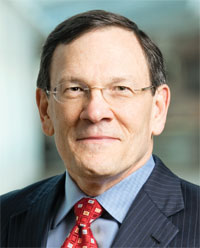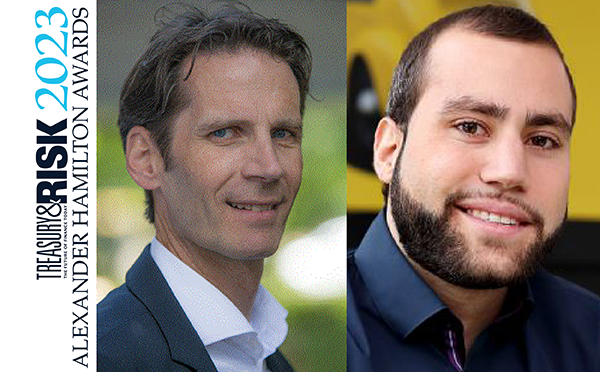 UPS has engineered a strong comeback from the economic slowdown. Last month, the package delivery company reported that its revenue surged 8.4% in the fourth quarter amid strong holiday volume. The pick-up included a 4.8% increase in international shipments, with business in China up 30%. Treasury & Risk checked in with CFO Kurt Kuehn on UPS' expansion overseas and the risks involved.
UPS has engineered a strong comeback from the economic slowdown. Last month, the package delivery company reported that its revenue surged 8.4% in the fourth quarter amid strong holiday volume. The pick-up included a 4.8% increase in international shipments, with business in China up 30%. Treasury & Risk checked in with CFO Kurt Kuehn on UPS' expansion overseas and the risks involved.
T&R: You've said emerging markets are a key focus in the year ahead. Which markets do you have your eye on?
Kuehn: It's really a focus for the next decade ahead. Emerging markets is not going to be a one-year story, certainly for UPS and for most global companies that are looking out. But they have been a priority the last couple of years. We have done a number of joint ventures and acquisitions, whether that's Eastern Europe or Turkey or Malaysia or Indonesia. Vietnam is another exciting area. It's going to continue to be an area of increased focus for us. Clearly some of these economies are past emerging and are rapidly developing, so it's important that we develop enough capabilities there to help be part of the economic growth.

But emerging markets are tricky. You've got to find the right business model in each market. The highly automated processes that we have in the U.S. and parts of Europe that give great returns against fairly high-cost labor do not make sense in some of these emerging markets. So we clearly have learned the lesson that one size does not fit all when it comes to business models across these emerging markets. That's a challenge for a lot of companies.
T&R: Is there a particular model that does tend to work in some of these emerging markets, especially in Asia?
Kuehn: No, I think that's part of the innovation and learning that certainly UPS is working toward. A good example is what we call our DIAD board [Delivery Information Acquisition Device], the electronic clipboard that is a miracle of modern technology. It's basically a portable computer and it keeps the drivers in constant contact, it has unique delivery instructions. It really allows us to be extremely efficient and also flexible.
But that DIAD may cost almost as much as a year's salary for some of our drivers in these emerging markets. There the benefits are outweighed by the costs. So it may mean that instead of a high-powered DIAD, they use a cell phone for updating the status of packages. It just requires creativity. It requires a combination of local relevance, so you have to have people there who understand the market.
T&R: As you grow and expand in these markets, you're picking up new and greater risks. How do you manage that from a finance point of view?
Kuehn: It creates a much more expansive platform and clearly we have a very active risk management program, both for finance and for the whole company. Emerging markets present great opportunities, but they're also areas where you can't always keep your finger on the pulse. We've done a lot of work lately to make sure we validate all of the partners that we use in different countries, that they adhere to standards, that we require very strict documentation of payments back and forth to avoid any hint of any questionable practices. It's a challenge, though. Clearly our audit committee stays very busy, because we have operations of some sort or another in over 200 countries.
T&R: One of the risks that is not unique to UPS, but that many companies don't face to the same extent as UPS, is terrorism risk. How has the company's approach to terrorism risk changed as you expand?
Kuehn: It's really been an evolution. The big story with some of these risks now is we're pushing, I think successfully, to get a much deeper business and government collaboration. That's really the answer to some of these things, to make sure that all information that's known can be shared, that we work together so you have a physical security, technological security and intelligence. It's that multilayered approach that is a good balance for that. So we've been very active working with governments across the world, certainly here in the U.S. especially, to be a part of the solution and to help both government and private enterprise find a good balance.
T&R: Have your hedging strategies changed now that the company appears to be heading into an uptick? Any differences in the strategies you employed for finance over the last two years?
Kuehn: I don't think it's changed dramatically. If anything, volatility has dropped a bit. So the outlier events perhaps are less likely, although you never know when one's going to happen, so there's a little less panic. Hedging is cheaper than it was a year or two ago. As volatility increased it was hard to hedge in a low-cost fashion. So in a more stable environment, then, our hedging becomes a little bit more routine. Currencies certainly move around, there's a certain amount of volatility in currency. We're continuing to refine our processes on that.
I think the biggest thing around hedging and risk management we're doing is to continue to simulate as best we can all exposures in aggregate for the company. It's still a work under way, but in many companies, UPS included, some of this hedging is in silos. You do fuel separately from currency and across different business units. So we continue to work on aggregating all the business units, all the different activities to understand how cash balances react across these different business units, to be able to aggregate all those and really see in total whether we're long or short in a particular currency or commodity.
T&R: So more of an emphasis on enterprise risk management?
Kuehn: Yes, at the highest level. I think there are a few companies that are doing this well, but the more diverse your business is, then the more challenging that is. Because our traditional small package business has different cash and exposures than does our freight forwarding and our logistics businesses. So getting all those together and understanding all of that across the globe is a pretty big activity. But we think there's a benefit there. It allows you to make sure that you're not double-hedging, that you really understand the value drivers of the company. So I do see that as an important emerging area in finance.
T&R: Is it an emphasis on technology or processes or both?
Kuehn: It certainly requires technology to simulate it. You have to look for how things are correlated. Some currencies move with fuel in a positive sense, some move inversely. Some currencies are correlated to other currencies. We certainly even use commodities other than just fuel. So it's multi-layered, and technology is a big piece of making that happen. But it also puts a big challenge on the finance and accounting function to make sure that our ledgers contain all the information that's needed to really effectively simulate this.
For more on Kuehn's strategy at UPS during the economic downturn, see Delivering the Goods in Bad Times.
© 2025 ALM Global, LLC, All Rights Reserved. Request academic re-use from www.copyright.com. All other uses, submit a request to [email protected]. For more information visit Asset & Logo Licensing.




